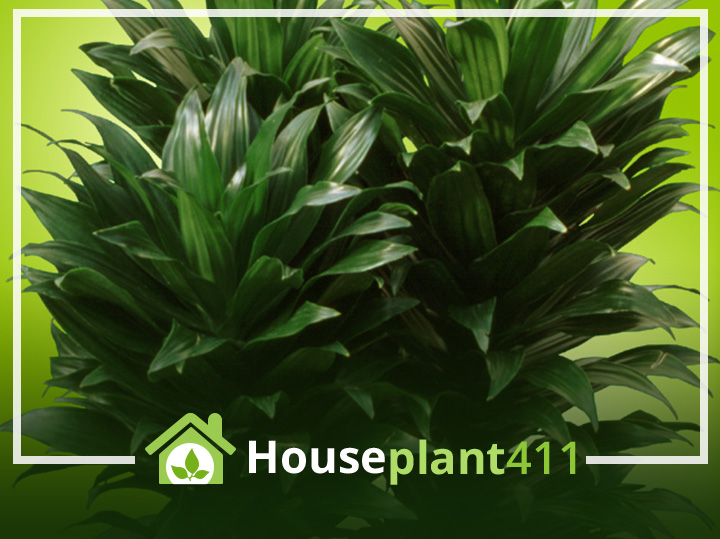The Dracaena compacta plant, a compact, slow growing member of the Dracaena family, is native to South East Africa. It is often referred to as Dracaena fragrans or Dracaena deremensis. The closest relative of the Compacta is the Dracaena janet craig, but the Compacta is quite different in appearance. The Dracaena Compacta has a thick green stems with several clumps of short, dark green leaves 2″-4″ in length on each stem. This plant is beautiful addition to homes or offices, but it’s a bit more difficult and more expensive than other dracaenas. Dracaena compacta plants are considered by some to be slightly poisonous, especially to dogs and cats. Read more about common houseplants that are poisonous in my book Don’t Feed Me to Your Cat: A Guide to Poisonous Houseplants.
Plant Care
Light
A Dracaena compacta plant grows best in medium light. In low light area they grow very slowly or not at all, tend to lose bottom leaves more quickly, and are easily over-watered. Rotate dracaenas weekly so that they don’t grow toward the light, become one sided, and lose their beautiful shape..
Water
Like other indoor houseplants, a dracaena compacta uses less water in low light than in brighter light. Keep the plant on the dry side to prevent root rot and leaf spot disease. Allow the top ¾ of the soil to dry out before watering. In low light this could be two weeks or more. Compacta plants do better when watered on a regular schedule. Dark brown tips usually indicate the following: too much chlorine or fluoride in the water, water is too salty (never use water that has passed through a softener), or too much plant food. Muddy brown leaf tips on new growth means the plant needs more water.
Fertilizer
Slow growing plants like the dracaena compacta, require very little fertilizer. Feed only twice a year, once in the spring and once in the summer, and be sure to dilute the plant food to 1/2 the recommended stength.
Temperature
Dracaena compacta plants like warm room temperatures 60-75°F (16-24°C). Cold winter drafts and heaters can damage the leaves.
Humidity
Basic household or office humidity is fine.
Flowering
Dracaenas rarely flower, when they do, I recommend immediately cutting off the flowers. Allowing the flowers to stay on the plant may distort the growth pattern of the plant and ruin its shape.
Pests
Mealy bugs and scale can be a problem.
Diseases
Leaf Spot disease, caused by a fungus living in the soil, causes reddish brown spots on the new leaves. Over- watering causes root rot. The best way to prevent both of these problems is to let the soil dry out before watering the plant.
Soil
Use a good, loose houseplant soil that drains quickly.
Pot Size
Dracaena plants like to be root- bound in small pots. If you move the plant to a larger container (with drip holes in the bottom) remember it will take the soil longer to dry out.
Pruning
Quickly remove dead or dying canes. Prune brown or yellow leaf tips with a wet scissors.
Propagation
Dracaena Compacta plants are propagated using stem cuttings.
Clean Air Plant
NASA lists dracaenas as excellent plants for removing benzene, formaldehyde and trichloroethylene from the air.
Poisonous Plant Info
There is a lot of disagreement as to whether Dracaenas are poisonous houseplants. I give them a #1 toxicity level. Dracaenas may cause intestinal issues if eaten by a small child, dog, or cat.
FAQ
There are several reasons why the tips of the leaves of Dracaena houseplants turn brown. Fluorine, chlorine, and salt in the water is one reason dracaenas get brown tips. Try using distilled water, or allow your household water to sit out overnight so the chemicals in it can dissipate. Too much plant food and using water that has passed through a softener also causes brow tips on dracaena plants.
Many dracaena houseplants come planted in lava rock, and it makes it very hard to tell when they need water. I always recommend replacing at least 1/3 of the lava rock with good potting soil.
These plants like to practically dry out before being watered. If the new growth has muddy brown leaf tips you are under watering. However, it could also mean that you are using water that has too much chlorine, fluoride, or salt in it. You may also be giving you Dracaena Plants too much plant food.

